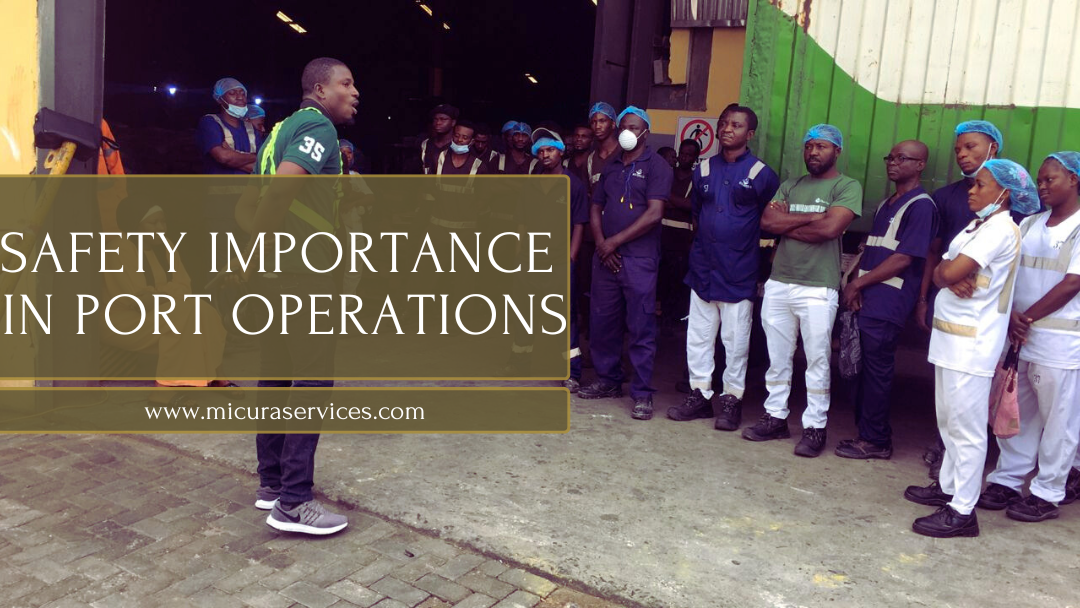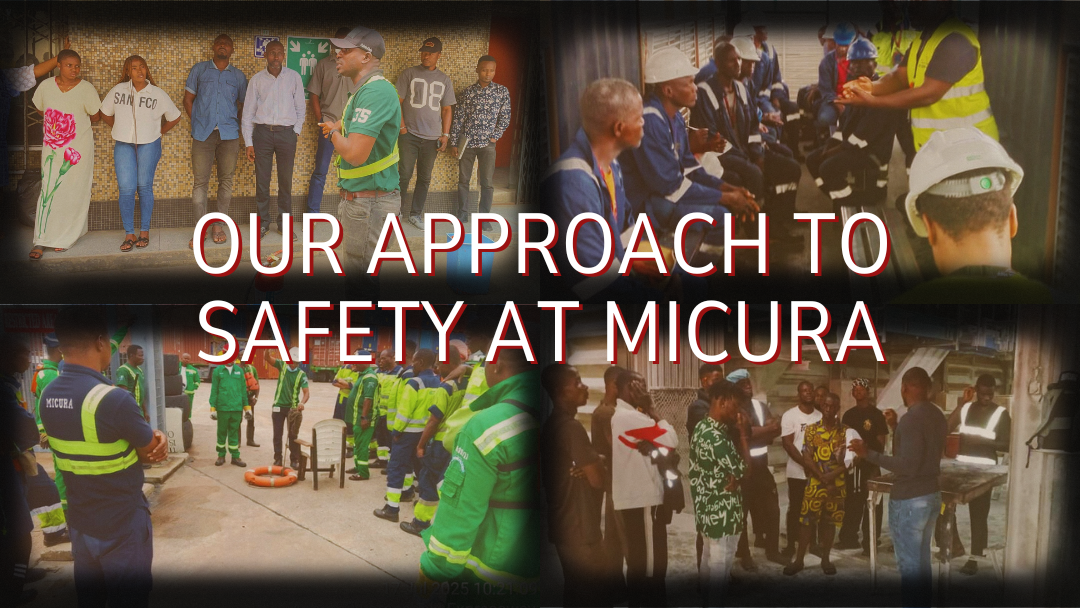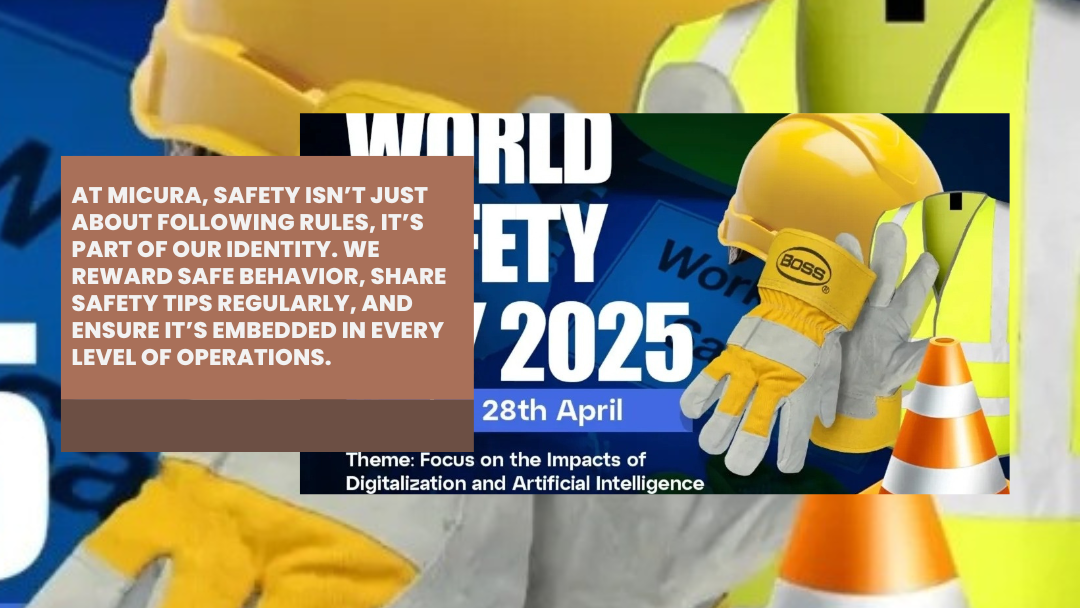
In the maritime and stevedoring world, safety is not just a policy… it’s a culture, a lifestyle, and a non-negotiable standard. At Micura Services Limited, we’ve come to understand that one moment of carelessness can result in long-term consequences, from injuries and financial loss to reputational damage. That’s why we say: safety isn’t optional, it’s foundational.
Port terminals are high-activity zones. You’ve got heavy machinery, towering containers, moving ships, unpredictable weather, and humans working together under pressure to meet deadlines. In this environment, there’s no room for guesswork, and here is why:
- Lives are on the line: A poorly secured container, a malfunctioning crane, or miscommunication on the ground can lead to injuries or worse. Ensuring that workers return home safely every day is our top priority.
- Delays cost money: One safety incident can halt operations. The ripple effect affects ship owners, port authorities, and clients alike.
- Reputation is everything: In this industry, reputation travels fast. Safety violations can cause clients to rethink their partnerships.
Our Approach to Safety at Micura

At Micura, safety isn’t just about following rules, it’s part of our identity. We reward safe behavior, share safety tips regularly, and ensure it’s embedded in every level of operations. We don’t leave safety to chance. Our protocols are rooted in prevention, preparation, and constant improvement.
Here’s what we actively implement:
- Regular HSE training sessions for all port and terminal staff
- Site-specific risk assessments before every new operation
- On-site safety officers and department reps trained to monitor compliance
- Strict PPE (Personal Protective Equipment) enforcement
- Clear reporting structures for near misses and incidents. No cover-ups allowed
- Proactive audits from our internal HSE unit
We believe safety should go beyond rules and checklists. It should be a way of thinking. That’s why we celebrate teams who maintain zero-incident records. We tell safety stories during briefings. We remind ourselves daily that the true measure of our success isn’t just how much cargo we move, but how safely we move it.
Innovation Meets Protection

As the maritime sector evolves, so must our approach to safety. From digitized reporting tools to biometric attendance systems, we’re constantly looking for better ways to protect our people while improving operations. Whether you’re passing through our terminals or working with us on a big operation, you’ll see a team that’s alert, equipped, and committed. Because at Micura:
Every shift, every crane, every container… safety comes first.
Frequntly Asked Questions (FAQs)
- Why is safety such a big deal in port operations?
Ports are high-risk environments. From heavy cargo handling and moving vessels to stevedoring operations and equipment use, one mistake can result in injury, equipment damage, or even fatalities. Safety protocols ensure not just the protection of workers, but also uninterrupted operations, reduced downtime, and the long-term credibility of the port and its operators.
- Isn’t safety just about wearing PPE and following instructions?
Not quite. While Personal Protective Equipment (PPE) and rule-following are important, safety in port operations also involves risk assessments, proper training, supervision, emergency response preparedness, and continuous improvement. It’s a full system, not just a checklist.
- What’s the cost of poor safety culture in port operations?
A poor safety culture leads to accidents, loss of skilled labor, equipment breakdowns, legal liabilities, and even loss of client trust. It also attracts regulatory penalties and damages the company’s reputation. Ultimately, unsafe practices cost more than doing it right from the start.
